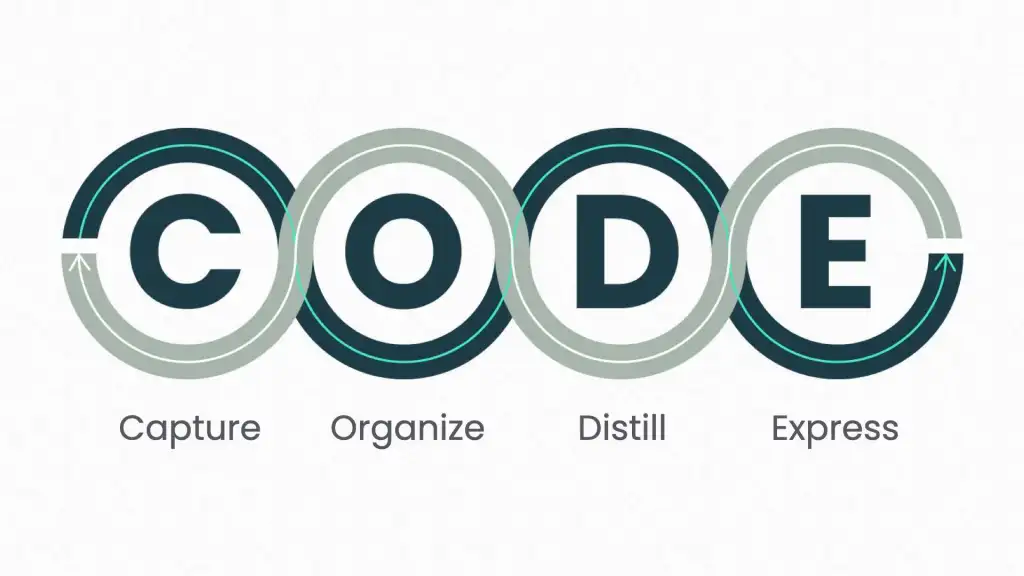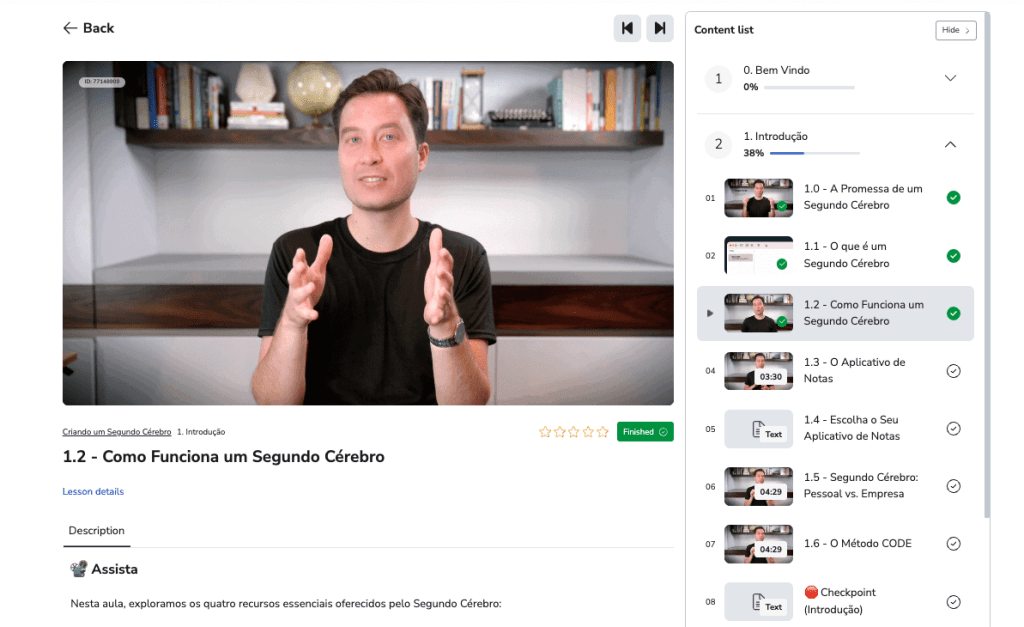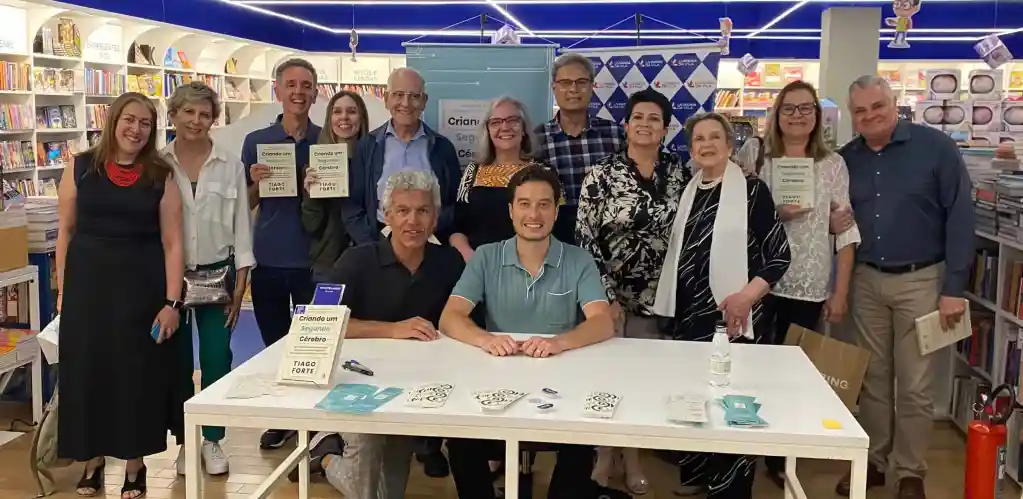Reflections on Our First In-Person Second Brain Summit
On October 3-4, 2024, we hosted our very first in-person Second Brain Summit in Los Angeles, and honestly, it was a dream come true.
This event felt like a “bucket list” moment in every way. I’d count it among my top five life milestones, right up there with getting married, witnessing my children’s births, and signing my first book deal.
Looking back, I’m still in awe of the warmth, love, and generosity everyone displayed—from attendees to volunteers to our lineup of speakers.

One of my biggest takeaways from the Summit was personal: I learned the incredible growth that comes from letting go.
For much of this project, I had to place my trust in others to handle details big and small. For someone who’s used to doing everything himself (or at least attempting to), this was transformative. For the first time, I felt fully carried by a team of talented individuals working right alongside me, taking collective ownership of a vision we all believed in.
A special shoutout goes to Simply Storied, our event organizer. They made it all possible, guiding us through each stage with finesse and care. And of course, none of this would have happened without the energy and dedication of our team and volunteers.

Now that I’ve had a month to process everything that happened, I’m ready to share my reflections with you, including some painful realizations and lessons learned.
Who joined the Second Brain Summit
We welcomed 212 total attendees from 16 countries! Only 57% came from the U.S., with some traveling from faraway places such as Bali, Taiwan, and Australia to join us.
59% were male and 41% female. A third of attendees identified as business owners and entrepreneurs, followed by employees and freelancers.
I loved to see such a wide distribution of different ages at the Summit, as I think it’s super important for different generations to learn from each other:

Only 44% of attendees had ever purchased one of our courses or cohorts. So for many, it was the first time joining one of our experiences.
I can confidently say that everyone who attended was a 10/10 in interest and passion. Each person followed such a unique and personal path to get there that we can’t identify a “typical” attendee profile.
The highlights: What attendees loved the most
Our highlights video will express this better than words ever could:
I was honestly taken aback by the positive things people said about the experience, starting about two hours in. They spoke about it being “life-changing” and “healing”; as the best conference they’d ever been to.
My favorite quotes I overheard:
- “You created the world you wanted to live in.” (from my dad)
- “This is a conference for high-functioning autistic people.” (this one made me laugh)
- “I finally found my people.”
- “This was a spiritual experience.” (from a speaker)
Here are the things attendees said they loved most:
- The incredible lineup of 39 speakers, their diversity along multiple dimensions, and how most stuck around and participated for the full two days of the conference.
- High-quality, warm and friendly, and interesting fellow attendees, whom many people noted were unlike any group they’d encountered elsewhere.
- The positive energy of the event, noting that people were genuinely excited to be there.
- The opportunity to meet people in real life whom they had known online for a while and to have informal yet deep conversations in person.
- The size of the event (~200 people) was ideal for connecting with others and getting to know them beyond superficial “networking.”
- The seamless, frictionless, classy event design and management (kudos to Simply Storied team)
- The sponsors added a lot of value by offering relevant products and education about how to use them.
- The “Digital Swag Bag” full of courses, memberships, and tools, allowing attendees to go deeper into what they learned.
Here’s how attendees reported feeling at the end of the summit (“inspiring connection” jumps out as perhaps the overarching theme of the entire summit):

By the end of the event, 98% of attendees said the Summit met or exceeded their expectations. Our Net Promoter Score (NPS) hit 80, a rare and impressive outcome that shows how likely they are to recommend it to others.
This shows how hungry people are for such communal experiences in our digital-centric world and that there’s huge potential in this area.

The financial snapshot
In the interest of transparency, I’d like to share what it took financially to bring this event to life.
Ticket sales brought in $120,604, and sponsorships contributed an additional $60,000, for a total of $180,604 in revenue. However, our total expenses came to $349,771, resulting in a net loss of $169,166. This essentially meant we subsidized each attendee by about $798 on top of the ticket price, which ranged from $999 (early-bird) to $1,200.
The primary challenge? We only sold about half as many tickets as I had originally envisioned, leaving us with the cost profile of a much larger event than we actually hosted. Although we made adjustments along the way, I was so committed to delivering a high-quality experience that I chose to eat the additional cost rather than cut essential aspects of the event.
Moving forward, it’s clear we’ll need a more sustainable financial model to make future Summits viable.

What we’d do differently next time
After reviewing the attendee feedback and our own reflections as a team, here are the things we’d change if we were to host the Second Brain Summit again:
- Increase the focus on the B2B and professional aspects of our niche, making it easier for people and their employers to justify the cost and time to attend.
- Prioritize interactive workshops and hands-on practical sessions, which can only be delivered live and in person.
- Cut non-essentials such as games, a reserved hotel block, and catered food. A smaller venue would also reduce costs for AV, rented furniture, on-site event staff, security, signage, etc.
- Pick a location different from downtown LA, as the surrounding neighborhood was pretty sketchy.
- Cap the attendance at an even lower number, so we are guaranteed to sell out and can spend more time on the event design rather than marketing/sales.
- Schedule fewer sessions concurrently. We had as many as 6 sessions happening at the same time, which was too many for people to choose from and created FOMO.
- Start conversations with sponsors earlier (9-12 months before the event, when budgets are being committed), seeking deeper, more strategic partnerships that would allow for higher sponsor revenue.
- Offer a recorded or live-streamed version of the Summit sessions, as so much value was on offer it would have been nice to capture it.
- Add a third day with an unstructured agenda, allowing for informal meals, walking around town, and follow-up meetups to process all the new information and deepen new relationships.
- Sell a “high-ticket program” on the backend of the summit, such as a group coaching program or mastermind, to support the financial side.
With these changes, I believe we could make future Summits a financially viable and deeply impactful addition to the Second Brain community. I know of no better way to build true community and connection in our increasingly fragmented, distracted, isolated modern world.
I’m deeply grateful to everyone who joined, participated, and made this Summit possible. It’s an experience I’ll never forget, and I owe a huge “thank you” to every single one of you who helped make it real.

A personal note
There was something about this summit that moved me at a very deep level. I felt myself changing, transforming into someone new.
Diving into the emotions and insights afterward with my coach, I realized that gathering together all these wonderful people in a warm, welcoming environment had touched a nerve inside me: a longstanding feeling I’ve had that I didn’t belong anywhere.
I traced that feeling back to my school years when I attended 5 different schools in 5 years from 5th grade to 9th grade, which made me highly resilient and adaptable but also made me feel isolated and alone like I didn’t have real friends. I traced it further back, to being the child of immigrant parents from two separate countries, a true third culture kid.
That narrative – that I didn’t belong in any group and no one could understand me – simply couldn’t withstand the outpouring of acceptance and love of 200 people, all united together in one common purpose. It was just so obvious that everyone there had felt alone or misunderstood, but that we could, in the words of my father, “Create the world we wanted to live in” anyway.
Many people have asked me whether we plan on hosting another summit in the future. I honestly can’t say, but what I do know is that in the coming years community is going to be one of the last and most meaningful differentiators in a world transformed by AI. It’s one of the only things that can’t be generated algorithmically, no matter what “social” media tells you.
I honestly don’t know how the financial side makes sense, but I do know two things: that every time I’ve doubled down on community it’s always worked out; and that every time I’ve doubled down on what has aliveness and energy it’s worked out, even if I couldn’t envision how in the beginning.
So in one way or another, I’m going to keep seeking ways to build true, meaningful community, to bring people together whether virtually or in person, and to help forge relationships that transcend any particular app, trend, or niche, so that everyone in my community has the chance to feel that sense of shared purpose and belonging that has been so transformative for me.
The best snapshots from the Second Brain Summit
Follow us for the latest updates and insights around productivity and Building a Second Brain on X, Facebook, Instagram, LinkedIn, and YouTube. And if you’re ready to start building your Second Brain, get the book and learn the proven method to organize your digital life and unlock your creative potential.
The post Reflections on Our First In-Person Second Brain Summit appeared first on Forte Labs.







